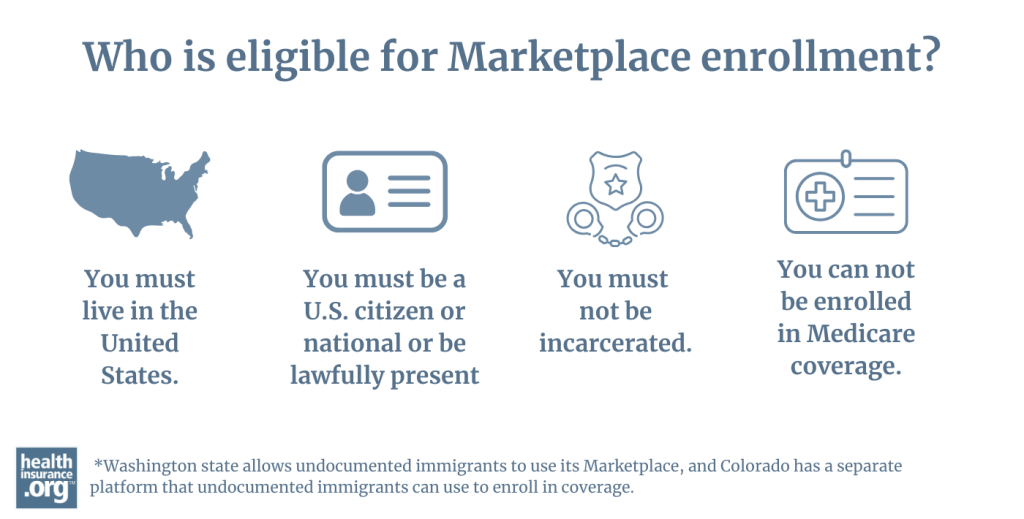
ACA Open Enrollment 2026 Guide
Here’s what you need to know about open enrollment for individual and family health coverage.

What is the Affordable Care Act’s open enrollment?
The Affordable Care Act’s (referred to as ACA or Obamacare) open enrollment period is the annual window during which individuals and families can compare the various health plans that are available and select the one that will best fit their needs for the coming year.
The open enrollment period typically runs from November 1 through January 15, but the dates vary in some states that run their own exchanges. In most states, December 15 is the deadline to get a January 1 effective date.
See our guide on open enrollment period deadlines for each state.
Starting in the fall of 2026, open enrollment will end December 15 in the majority of states, and won’t be allowed to continue past December 31 in any state. But that change does not apply to the open enrollment period taking place in the fall of 2025.
The open enrollment window applies to plans sold through the Marketplace/exchange as well as plans purchased off-exchange, directly from an insurance company.
Outside of open enrollment, you can only sign up for ACA-compliant individual and family health insurance (or switch to a different plan) if you’re eligible for a special enrollment period, most of which are triggered by qualifying life events.
Learn more about special enrollment periods and qualifying life events.
How much could you save on 2026 coverage?
Compare health plans and check subsidy savings from a third-party insurance agency.



When is open enrollment for my state?
In the majority of the states, open enrollment for 2026 coverage runs from November 1, 2025 through January 15, 2026. But some state-run exchanges have different schedules.1 You can see the deadlines for each state in the table below.
| State | Open Enrollment Period for 2026 Coverage | |
|---|---|---|
| Alabama | November 1, 2025 – January 15, 2026 | |
| Alaska | November 1, 2025 – January 15, 2026 | |
| Arizona | November 1, 2025 – January 15, 2026 | |
| Arkansas | November 1, 2025 – January 15, 2026 | |
| California | November 1, 2025 – January 31, 2026 | |
| Colorado | November 1, 2025 – January 15, 2026 | |
| Connecticut | November 1, 2025 – January 15, 2026 | |
| Delaware | November 1, 2025 – January 15, 2026 | |
| District of Columbia | November 1, 2025 – January 31, 2026 | |
| Florida | November 1, 2025 – January 15, 2026 | |
| Georgia | November 1, 2025 – January 15, 2026 | |
| Hawaii | November 1, 2025 – January 15, 2026 | |
| Idaho | October 15, 2025 – December 15, 2025 | |
| Illinois | November 1, 2025 – January 15, 2026 | |
| Indiana | November 1, 2025 – January 15, 2026 | |
| Iowa | November 1, 2025 – January 15, 2026 | |
| Kansas | November 1, 2025 – January 15, 2026 | |
| Kentucky | November 1, 2025 – January 15, 2026 | |
| Louisiana | November 1, 2025 – January 15, 2026 | |
| Maine | November 1, 2025 – January 15, 2026 | |
| Maryland | November 1, 2025 – January 15, 2026 | |
| Massachusetts | November 1, 2025 – January 23, 2026 | |
| Michigan | November 1, 2025 – January 15, 2026 | |
| Minnesota | November 1, 2025 – January 15, 2026 | |
| Mississippi | November 1, 2025 – January 15, 2026 | |
| Missouri | November 1, 2025 – January 15, 2026 | |
| Montana | November 1, 2025 – January 15, 2026 | |
| Nebraska | November 1, 2025 – January 15, 2026 | |
| Nevada | November 1, 2025 – January 15, 2026 | |
| New Hampshire | November 1, 2025 – January 15, 2026 | |
| New Jersey | November 1, 2025 – January 31, 2026 | |
| New Mexico | November 1, 2025 – January 15, 2026 | |
| New York | November 1, 2025 – January 31, 2026 | |
| North Carolina | November 1, 2025 – January 15, 2026 | |
| North Dakota | November 1, 2025 – January 15, 2026 | |
| Ohio | November 1, 2025 – January 15, 2026 | |
| Oklahoma | November 1, 2025 – January 15, 2026 | |
| Oregon | November 1, 2025 – January 15, 2026 | |
| Pennsylvania | November 1, 2025 – January 15, 2026 | |
| Rhode Island | November 1, 2025 – January 31, 2026 | |
| South Carolina | November 1, 2025 – January 15, 2026 | |
| South Dakota | November 1, 2025 – January 15, 2026 | |
| Tennessee | November 1, 2025 – January 15, 2026 | |
| Texas | November 1, 2025 – January 15, 2026 | |
| Utah | November 1, 2025 – January 15, 2026 | |
| Vermont | November 1, 2025 – January 15, 2026 | |
| Virginia | November 1, 2025 – January 30, 2026 | |
| Washington | November 1, 2025 – January 15, 2026 | |
| West Virginia | November 1, 2025 – January 15, 2026 | |
| Wisconsin | November 1, 2025 – January 15, 2026 | |
| Wyoming | November 1, 2025 – January 15, 2026 | |
How to enroll in the Marketplace
During open enrollment, you can enroll in an ACA-compliant individual and family health insurance plan – or make changes to your existing coverage – through the Marketplace in your state.

- If you have specific doctors or medical facilities you want to use, check to see if any plans have them in-network. If you take any medications, check to see if any plans have them in their formularies and what the out-of-pocket costs will be.
- If you want help with the process, assistance is available via local insurance brokers and Navigators, as well as enhanced direct enrollment entities.
Learn more about how to choose the best health plan for your situation.


Here’s what you’ll need for each enrollee:
- Name, Address, Social Security Number (Here’s why it’s required.) and Birth date
- Citizenship or legal residency status. (Proof may be required.)
- Payment information for the first month’s premium. (Setting up automatic payments for future months can help you avoid an inadvertent lapse in coverage.)
- If you’re 30 or older and want a catastrophic plan, you’ll need a hardship exemption.2
- Many applicants are eligible for financial assistance.3 If you’re applying for subsidies, you’ll also need the number of people on your tax return and your total household income. (The Marketplace may require proof of your income through a variety of documentation,4 and coverage details about any employer-sponsored coverage available to you.)


- You can do this yourself or have a broker, Navigator, or enrollment assister help you with the process.
- You can apply online, over the phone, submit a paper application, or enroll in-person with a local broker, Navigator, or enrollment assister.
- You will not need to answer any medical history questions. But be sure that the plan you’re selecting has your medical providers in-network, covers your medications, and has out-of-pocket costs that you’ll be able to manage.


- Log into your Marketplace account after you’ve completed the process, to make sure everything is in order.
- Watch your email and mail for communications from the Marketplace and your new insurer. (For example, you may be asked to provide documentation to verify income or legal residency).
- Once your policy and ID cards arrive in the mail, read through all of it and reach out to your broker, Navigator, or the health plan if you have questions.

Frequently asked questions about Obamacare open enrollment
Who is eligible for Marketplace enrollment?
To be able to enroll on the ACA’s Marketplace:5
- You must live in the United States.
- You must be a U.S. citizen or national or be lawfully present, and DACA recipients are no longer allowed to use the Marketplace. (Washington state allows undocumented immigrants to use its Marketplace, and Colorado has a separate platform that undocumented immigrants can use to enroll in coverage6).
- You must not be incarcerated.
- You can not be enrolled in Medicare coverage.

Who is eligible for financial assistance when buying coverage through the Marketplace?
Being eligible to enroll in the Marketplace is not the same as being eligible for financial assistance. In short, the income-based subsidies available through the Marketplace/exchange are reserved for people who aren’t eligible for Medicaid, zero-premium Medicare Part A, or coverage offered by an employer that’s deemed affordable and comprehensive. (Here’s how to determine whether employer-sponsored coverage is affordable to you.)
You can use our subsidy calculator to get an idea of whether you’re eligible for premium subsidies, and if so, how much those subsidies could be. (Note that until at least late October 2025, the subsidy calculator will show subsidy amounts for 2025 coverage.)
What is a premium subsidy and how do I get financial help during open enrollment?
Premium subsidies are a refundable tax credit.7 You may qualify for a subsidy based on your projected household income for the year you’ll have coverage. And then you’ll need to reconcile that with the IRS when you file your tax return for that year, based on your actual income.
Premium subsidy rules are designed to ensure that subsidy-eligible individuals won’t pay more than a certain percentage of their household income in premiums for the benchmark (second-lowest-cost Silver) plan in the Marketplace.8
The percentage of household income that people are expected to pay depends on their income. From 2021 through 2025, these percentages ranged from 0% to 8.5%, with no upper income limit for subsidy eligibility. This was due to the American Rescue Plan and the Inflation Reduction Act.
But those provisions were temporary, and are scheduled to expire at the end of 2025. Unless Congress acts to extend ths subsidy enhancements, the percentage of income that people have to pay for the benchmark plan will range from 2.1% to 9.96% of household income.9 And anyone with household income above 400% of the federal poverty level will no longer qualify for any subsidies at all.
Cost-sharing reductions: The other ACA subsidy
Marketplace cost-sharing reductions (CSR)10 are another type of Obamacare subsidy. CSR assistance is designed to ensure that people with low to moderate incomes can afford to receive health care services. Enrollees who qualify for CSR usually also qualify for premium subsidies.
CSR subsidies result in lower out-of-pocket costs, including lower deductibles and copays. For applicants with eligible incomes, these subsidies are automatically incorporated into all of the available Silver-level plans. But if you’re eligible for CSR subsidies and you buy a metal plan other than a Silver plan, you’ll forfeit this advantage
In addition to federal premium subsidies and CSR subsidies, some state-run Marketplaces offer their own subsidies.
I have Medicare. Can I buy supplemental insurance through the ACA Marketplace during open enrollment?
No. It is unlawful for someone to sell you a Marketplace plan (or an individual/family plan outside the exchange) if you already have Medicare, even if you only have either Medicare Part A or Part B.11 So if you’re enrolled in Medicare, the Marketplace open enrollment period does not apply to you.
How is open enrollment for 2026 coverage different from the year before?
During the open enrollment period for 2025 coverage, enrollment reached yet another record high, with more than 24.3 million people signing up for coverage through the Marketplaces nationwide.12
The record-high enrollment was driven largely by the subsidy enhancements created by the American Rescue Plan (ARP) — which are scheduled to expire at the end of 2025 — as well as the “unwinding” of the pandemic-era Medicaid continuous coverage rule.
For 2026 coverage, several changes are applicable:
- The subsidy enhancements that have been in place since 2021 are scheduled to expire at the end of 2025. Unless Congress acts to extend the subsidy enhancements, Marketplace subsidies will be smaller in 2026, and some people will lose their subsidies altogether. This is expected to substantially increase net (after-subsidy) premiums.
- Overall average full-price (before subsidy) premiums are increasing much more than they have over the last several years. Nationwide, the average preliminary increase is almost 22%. This is driven in part by the uncertainty caused by the federal government’s Marketplace rule that will reduce enrollment, and the failure of Congress to extend the subsidy enhancements.13
- The upper limit on out-of-pocket maximums will increase significantly, to $10,600 for a single individual and $21,200 for a family. This is partially due to a new rule that the Trump administration finalized in 2025. The rule change methodology will also result in smaller premium subsidies for 2026, as it increases the percentage of household income that people have to pay for their coverage.
- Illinois will be running its own Marketplace platform, Get Covered Illinois. Illinois residents will not use HealthCare.gov to sign up for 2026 coverage.
- State-funded subsidies will change in some states.
- Marketplace enrollees who select Bronze or catastrophic plans will be able to contribute to a health savings account (HSA).
- People who don’t qualify for Marketplace subsidies due to their income will be eligible for a hardship exemption that will allow them to purchase a catastrophic plan, and the process for obtaining these exemptions will be streamlined.14
- There will no longer be a cap on how much excess APTC (advance premium tax credit) has to be repaid to the IRS. Through 2025, if a person underestimated their income when enrolling and thus received too much APTC, the amount they had to repay was capped as long as their household income ended up being below 400% of the federal poverty level. Starting with the 2026 plan year, there are no longer caps, so all excess APTC has to be repaid.
- DACA recipients are no longer eligible to use the Marketplace. They became eligible for Marketplace coverage starting November 1, 2024, but that ended almost immediately in some states due to a court ruling, and it ended nationwide in August 2025 due to a new federal rule.
- Recent immigrants with household income below the federal poverty level will no longer be eligible for Marketplace subsidies.
- In many states, insurers are exiting the Marketplace at the end of 2025 (including Aetna in 17 states), and there are a few states where new insurers are joining the Marketplace. Insurer exits and entries can result in changing benchmark premiums, which can change premium subsidy amounts.
- Automatic re-enrollment protocols have changed due to a new federal rule.
- The federal rule calls for enrollees with $0-premium plans to have a minimum $5/month premium if they rely on auto-renewal, until they log into their account and re-verify their eligibility information. But this provision was stayed by a judge in August 2025, pending the outcome of a lawsuit challenging the provision.15
- The Marketplace can no longer automatically move an enrollee from a Bronze to Silver plan if the person is eligible for cost-sharing reductions and the Silver plan would be available at the same or lower premium and with the same provider network.
Is there a penalty for not having insurance?
Should I let my existing ACA-compliant health plan auto-renew?
Auto-renewal or automatic re-enrollment (when a plan is terminating) for the coming year’s coverage is available through the Marketplaces in every state (this will likely end after the 2027 plan year, due to the “Big Beautiful Bill” that was enacted in 2025).21
However, it is generally not in your best interest to rely on automatic renewal. Selecting your own plan for the coming year is better than relying on auto-renewal or a Marketplace algorithm that will select a new plan on your behalf.
And there are some changes to the auto-renewal protocols for 2026 coverage, as a result of a federal rule that was finalized in 2025. Specifically:
- The rule calls for Marketplace enrollees with $0-premium plans in 2025 to have a minimum $5/month premium in 2026 if they rely on auto-renewal, and to only be able to access their full subsidy amount (assuming they would still qualify for a subsidy large enough to cover their full premium) once they log into their account and verify their eligibility information. However, this rule change was stayed by a judge in August 2025, pending the outcome of a lawsuit challenging the provision.15
- Marketplace cost-sharing reductions (CSR) are only available on Silver plans. So HealthCare.gov implemented a new protocol in 2024 that would automatically move a Bronze enrollee to a Silver plan if the person was eligible for CSR and the Silver plan had the same or lower premium and the same provider network. That protocol is no longer available for the 2026 plan year, so the person in that scenario would be auto-renewed into their same Bronze plan, despite the fact that they’re missing out on CSR benefits.
You’ll want to pay close attention to any notices you receive from your health plan and Marketplace, as they will let you know how your benefit details, monthly premium, and premium subsidy (if applicable) are changing for the coming year. You’ll also want to carefully compare the other options available in your area, as they may not be the same as the options that were available for this year.
You may find that keeping your current plan is still the best option. But it’s better to actively make that decision than let it be the default.
Who can help me enroll in an ACA-compliant / Obamacare health insurance plan?
You can certainly choose to select a plan and complete the enrollment process on your own, through the Marketplace/exchange website (or via an enhanced direct enrollment entity if you’re in a state that uses HealthCare.gov).22
But if you prefer to have help with the process, it’s available for free online, over the phone, and from people in your community:
- Health insurance Navigators
- Provide education and outreach about the Marketplace and available health plans, help applicants determine whether they qualify for subsidies or Medicaid, and assist in the enrollment process.
- Can generally provide assistance after you enroll, helping with issues like eligibility appeals and how to utilize your health coverage.
- Are funded by the Marketplace. The funding comes from the federal government in states that utilize a federally run exchange, and by the state in states that run their own exchanges. However, the Trump administration has drastically reduced Navigator funding for the states that use HealthCare.gov, so there won’t be as many Navigators available during the open enrollment period in the fall of 2025.23
- Certified application counselors (CACs)
- Similar to Navigators, but their focus tends to be strictly on helping people enroll, without the more extensive assistance that some Navigators can provide.
- The exchange designates local “CAC designated organizations” (health centers, faith-based organizations, colleges, etc.) and people who are affiliated with or employed by those organizations are eligible to serve as CACs.24
- CAC funding can come from a variety of state and federal sources, and CACs are often volunteering their time to help people enroll in health coverage. The Marketplace does not provide funding for CAC organization.
- Learn more about certified application counselors.
- Insurance brokers and agents
- Licensed by the state and certified by the Marketplace/exchange.
- Can help consumers determine subsidy or Medicaid eligibility, and they can also make plan recommendations based on a client’s particular situation.25 (Navigators and CACs cannot do this).
- Provide ongoing assistance for questions and problems regarding billing, utilization, claims, and appeals.
- Generally are required to carry errors and omissions insurance.
Footnotes
- ”California, Colorado, Connecticut, Washington DC, Georgia, Idaho, Illinois, Kentucky, Maine, Maryland, Massachusetts, Minnesota, Nevada, New Jersey, New Mexico, New York, Pennsylvania, Rhode Island, Vermont, Virginia, Washington ⤶
- “How to pick a health insurance plan” HealthCare.gov, Accessed September 2023 ⤶
- “Effectuated Enrollment: Early 2023 Snapshot and Full Year 2022 Average“ CMS.gov, March 15, 2023 ⤶
- “How do I resolve a data matching issue?“ HealthCare.gov, Accessed September 2023 ⤶
- “A quick guide to the Health Insurance Marketplace®” HealthCare.gov, accessed July 19, 2024 ⤶
- ”States Expand Access to Affordable Private Coverage for Immigrant Populations” The Commonwealth Fund. Feb. 8, 2024 ⤶
- “Premium tax credit” HealthCare.gov, Accessed Sep. 15, 2023 ⤶
- “Questions and Answers on the Premium Tax Credit” IRS.gov, Accessed Aug. 21, 2025 ⤶
- ”Revenue Procedure 2025-25” Internal Revenue Service. Accessed July 30, 2025 ⤶
- “APTC and CSR Basics” CMS.gov, June 2023 ⤶
- “Medicare & the Health Insurance Marketplace” Medicare.gov, September 2022 ⤶
- “2025 Marketplace Open Enrollment Period Public Use Files” CMS.gov, Accessed Aug. 22, 2025 ⤶
- ”2026 Rate Change Project” ACA Signups. Updated Aug. 7, 2025 ⤶
- ”Guidance on Hardship Exemptions for Individuals Ineligible for Advance Payment of the Premium Tax Credit or Cost-sharing Reductions Due to Income, and Streamlining Exemption Pathways to Coverage” Centers for Medicare & Medicaid Services. Sep. 4, 2025 ⤶
- ”Memorandum Opinion, City of Columbus et al. versus Robert F. Kennedy Jr. et al” (Starting on page 25). United States District Court for the District of Maryland. Aug. 22, 2025 ⤶ ⤶
- “Massachusetts Individual Mandate” Massachusetts Health Connector, accessed August 2023 ⤶
- “New Jersey’s Health Coverage Requirement”NJ.gov, Nov. 1, 2022 ⤶
- “Why Are Californians Required by Law to Have Health Insurance? ” CoveredCA.com, Feb. 16, 2023 ⤶
- “Health Insurance Mandate” State of Rhode Island Division of Taxation, accessed August 2023 ⤶
- “Updated Guidance For Applicable Entities Pursuant To The Individual Taxpayer Health Insurance Responsibility Requirement Amendment Act Of 2018” DC.gov, March 31, 2020 ⤶
- ”Health Provisions in the 2025 Federal Budget Reconciliation Bill” (The Affordable Care Act) KFF.org. July 8, 2025 ⤶
- “Entities Approved to Use Enhanced Direct Enrollment” CMS.gov, Aug. 9, 2024 ⤶
- “CMS Announcement on Federal Navigator Program Funding” CMS.gov, Feb. 14, 2025 ⤶
- “Certified application counselor designated organization (CDO) program information CMS.gov, accessed August 2023 ⤶
- “Who’s helping me complete my application? Healthcare.gov, accessed August 2023 ⤶

